|
|
|||||||||||
|
|
|||||||||||
 |
|||||||||||
|
|
|||||||||||
|
![]()
| Origins and features of Bagua Taijiquan |
|
Based on articles by Qiao Hongru and Chen Lixin; translated from Chinese and edited by Jarek Szymanski, photos: J.Szymanski; © J.Szymanski 1999 |
|
Bagua Taijiquan has been taught by Guo Zhushan, the third generation master of Baguazhang, and become popular in Jinan (capital of North China Shandong Province) and Tianjin areas. Although transmitted within Bagua tradition, the style belongs to Taijiquan.
Bagua Taijiquan comes from Yang Family Boxing; first Yang Luchan passed it to Xia Guoxun, Xia taught Liu Dekuan (nicknamed "Liu Big Spear"), Liu taught Cheng Haiting (Cheng Tinghua's oldest son), who passed it to Guo Zhushan (disciple of Cheng Tinghua and Li Cunyi) and Jiang Xinshan. It is said that Xia Guoxun was Yang Luchan's son-in-law so he must have received true transmission; Xia and Liu Dekuan were sworn brothers; Liu, Cheng Tinghua and Li Cunyi were also sworn brothers through Jinlan ceremony. Because of these close relations Bagua Taijiquan is said to relatively well preserve the original appearance of taijiquan. Since Guo Zhushan and Cheng Haiting were kungfu brothers and very skilful Bagua practitioners, they put some Bagua movements, kicks, etc. into Taijiquan, so that the flavour has changed. Since Cheng Haiting passed away early, Bagua Taijiquan that is known nowadays has been researched and developed by Guo Zhushan, who then passed it to Zhang Wanying, Jing Dewai, Qiao Hongru and others. Guo Zhushan was born in Tianjin in 1901. His father, Guo Tiancheng, had a machine factory there, was very wealthy and was often inviting famous martial artists to stay at his mansion. Masters like Li Cunyi, Liu Dekuan, Zhang Zhankui, Li Kuiyuan and other were frequent guests. One of them, famous Bagua master, Cheng Haiting (also called Cheng Youlong) spent over ten years at Guo's house and was treating Guo Zhushan like his own brother. |
|
On this rare photo - Cheng Haiting (Cheng Youlong), Cheng Tinghua's oldest son |
Guo became Li Cunyi's official disciple at the age of eight and started to practice Xingyiquan first. Li Cunyi even took young Guo as his adopted son. However later, because of serious illness of legs, Guo took up Bagua Taijiquan Neigong (Internal Practice) under Cheng Haiting. Cheng taught him in the name of his father, Cheng Tinghua, so Guo Zhushan has been considered Cheng Tinghua's disciple. Practice of Bagua Taijiquan had miraculous effect on Guo, who at the beginning was able to exercise only in bed, and then, when his health improved, while sitting and standing, until he recover completely. Later famous Wudang Sword master, Li Jinglin, asked Guo to teach Bagua Taijiquan to Li's sons and daughters. |
|
|
|
In 1931 Guo moved to Jinan in Shandong Province and lived there until 1966, when he moved back to Tianjin. He passed away in 1968. The name "Bagua Taijiquan" was decided in 1958. Qiao Hongru who originally studied Yang style Taijiquan, while learning the routine passed by Guo, realized that this Taijiquan has many Baguazhang features and as such differs from typical Taijiquan branches. Qiao suggested to change the name of the routine into Bagua Taijiquan, e.g. Taijiquan practiced within the style of Baguazhang, or Taijiquan that has Baguazhang features. Qiao's teacher, Guo Zhushan, agreed and since then the style has been called Bagua Taijiquan.
Bagua Taijiquan is a part of Bagua Taiji Boxing, which contains specific practice methods, empty hand routines, straight sword, pushing hands, etc. Bagua Taiji Gong is a set of eight exercises (it has been designated as universal practice method in Shandong Province by Qigong Scientific Research Association of Shandong Province); Bagua Taijiquan routines include simplified set (24 movements), Bagua Taijiquan in 128 movements and Kun Bagua Taijiquan in 118 movements; Bagua Taijijian (sword) in 54 movements; fixed and moving step Tuishou (pushing hands), San Shou (Free Fighting).
Analyzing the traditional 128-movements routine, one can notice that it actually has 88 different postures (other are repetitions), e.g. almost 70% of all movements, while for popular Taijiquan styles the proportion is only about 50%. This is also one of Bagua Taijiquan features. Out of these 88 movements, a half have names different from popular Taiji styles, while the others are practiced differently.
Main difference between Bagua Taijiquan and popular Taijiquan lies in the influence Cheng style Baguazhang had on the former. Many movements are based on Bagua techniques, footwork, spiral movements of hands, kicks in their majority come from Bagua. Since these movements are designed to stretch tendons, Bagua Taijiquan can also "stimulate the circulation of the blood and cause the muscles and joints to relax".
Bagua Taijiquan puts strong emphasis on single movements practice, which is the key for mastering the whole system.
|
|
|
|
Qiao Hongru performing Bagua Taijiquan during First International Baguazhang Conference in Beijing, 1993 |
|
|
End of "Origins and Features of Bagua Taijiquan"; © J.Szymanski 1999 |
|
Following VCDs on Bagua Taijiquan are available through this website: |
| Taiji Gong (Basic Methods) | First Routine | Second Routine | Third Routine |
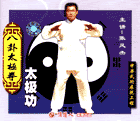 |
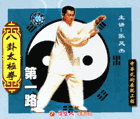 |
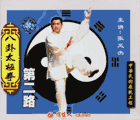 |
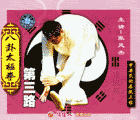 |
| Fourth Routine | Pushing Hands and Free Fighting | Routines Demonstrations |
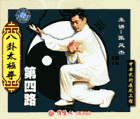 |
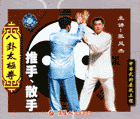 |
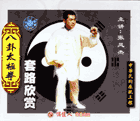 |
Home ▪ About me ▪ Updates ▪ Taiji ▪ Bagua ▪ Xinyi-Xingyi ▪ Other Styles ▪ News ▪ Store ▪ Community ▪ Email